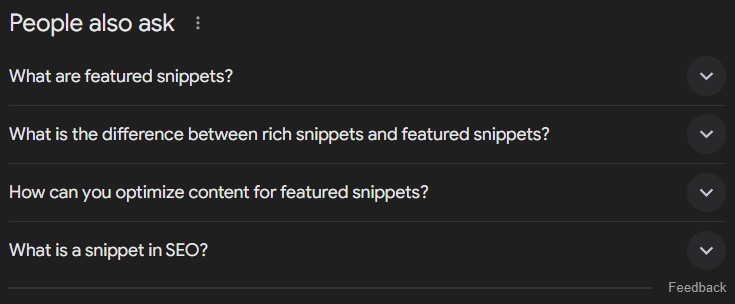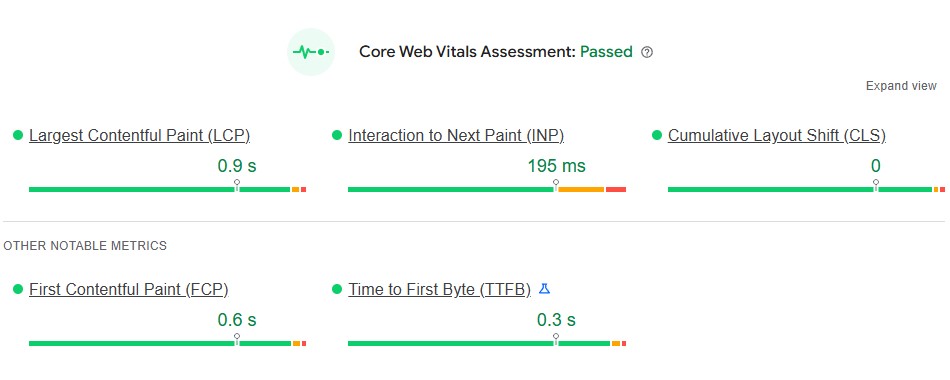Dominating the SERP isn’t just about hitting number one anymore. It’s about snagging those eye-catching SERP features like featured snippets and video carousels. They don’t just grab attention; they’re traffic magnets.
Picture this: landing in a featured snippet can boost your click-through rates by up to 8%. Even more impressive, it could rocket your organic traffic by a whopping 677%. And let me tell you, with everyone battling for visibility, getting into these prime spots takes more than a sprinkle of SEO magic.
You need to really zero in on what users are hunting for. And match it with top-notch content that sings to their needs.
But here’s where strategy comes into play: scanning the horizon for opportunities within these SERP features can set you apart from the crowd. Hunting down these chances means staying sharp on SEO trends and always aiming for quality over quantity when crafting your content pieces.
Optimize for Featured Snippets
Optimizing for featured snippets is a crucial step in dominating SERP features. By targeting common queries, using clear formatting, and highlighting searcher intent, you can increase your chances of capturing this prime spot.
- Target Common Queries: Focusing on “who,” “what,” “when,” where,” why,” and “how” questions puts you ahead. AnswerThePublic is great for finding what people ask online. Aim to answer these directly in your content. Surprisingly, such simplicity boosts your chance at position zero.
- Use Concise Formatting: Bullet points or numbered lists work wonders for clarity. For how-tos, nothing beats a clean step-by-step format. Short paragraphs keep it readable and engaging, too. Remember, structure matters as much as the answer itself.
- Emphasize Searcher Intent: A straight-to-the-point approach wins every time, with users seeking immediate answers like “how to bake a cake.” Don’t clutter with unnecessary history or details. Such efficiency often secures that coveted snippet slot quicker than others think possible.
Leverage Schema Markup Effectively
Schema markup, a type of structured data, gives search engines extra details about your content. It can make your listings stand out on the SERP and improve visibility. Consider using different schema types based on your page’s content.
This approach enhances how informative and attractive your listings appear in searches. For example, adding Product Schema to a “best laptops” list could directly show potential buyers key info such as ratings or prices from the search page itself. Remember, what you choose should match what users are looking for.
Their intent is key. A restaurant site might benefit more from LocalBusiness schema by detailing its location and operating hours right off the bat. While putting schema into play won’t always land you those enriched results immediately, it vastly improves your chances.
Don’t forget to check over everything with Google’s Structured Data Testing Tool; this step verifies that you’re meeting Google’s recommended practices effectively.
Enhance User Experience Signals
Getting your site to the top of search results means focusing on what users want. Here’s how user experience signals play a huge role.
Intuitive Navigation: Your site should be easy to explore. Menus and links guide visitors through content effortlessly. This keeps them longer on your page, reducing bounce rates.
- Optimize for Speed: A fast-loading page is crucial. Aim for under 2 seconds to keep people from leaving too soon. Use techniques like compressing images and using CDNs effectively.
- Mobile Friendliness: In today’s mobile-first world, most searches happen on phones or tablets. Your website must work well here. Use Google’s Mobile-Friendly Test early often. This helps secure better rankings by meeting over half of global search demands. Engaging Content: Solid, actionable content hooks readers. It lowers bounce rates, signaling quality Google, thus raising the chances of SERP feature domination.
Prioritize High-Quality Content Creation
To own the search results page, you need to create content that Google loves. That means it has to be full of authority and relevance for what people are looking up. Think about when someone searches for the “benefits of yoga.” They want a complete guide, not just a quick answer.
So give them that depth. Adding visuals like videos or infographics makes your stuff stickier and appealing to different types of learners. That stands for Expertise, Experience, Authoritativeness, and Trustworthiness.
Show off your know-how by citing solid sources and offering expert insights—maybe even including the author if they’re an expert in their field! Keep everything fresh, too; outdated information doesn’t help anyone. Why does this matter?
Well-crafted content is more likely to grab those coveted spots on Google’s features. Think snippets right at the top or side of the knowledge panels where everyone looks first.
Incorporate Long-Tail Keywords
Long-tail keywords are the secret sauce in the SEO world. They pack a mighty punch with less competition and more targeted visitors. Let’s break down how to use them efficiently.
- Identifying Keywords Worth Targeting: Analyzing long-tail phrases gives insights into users’ specific queries. Use tools like SEMrush or Google’s Keyword Planner for this task. These platforms reveal lesser-known but highly relevant terms your audience searches for. Even those with low search volumes can lead to high conversions.
- Creating Audience-Centric Content: Focus on crafting content that speaks directly to niche groups using these longer phrases—something as specific as “best shoes for marathon runners.” By honing in on their precise needs, you’re more likely to resonate and convert readers into customers or followers because of the increased relevance.
- Elevating PPC Campaigns Affordably: Incorporate these detailed keywords into pay-per-click (PPC) strategies too. Thanks to typically lower cost per clicks (CPC), they offer an affordable way to target ads at people ready to take action—from buying a product to signing up for information—upping ad efficiency without breaking the bank.
Utilize Image and Video SEO
Start by providing descriptive alt text for your images and videos. This step is crucial. It makes content accessible to all users, including those using screen readers.
Plus, it helps search engines grasp the context of your visuals better. Next up, focus on file names before you upload them. Rename your files to include relevant keywords like “best-android-phones.jpg.” This move is pretty straightforward but often overlooked; it significantly aids in associating your visual content with specific queries.
For videos, pick a reliable hosting platform first thing. YouTube is a solid choice because Google owns it and favors its content in SERPs. Then choose engaging thumbnails that catch eyes at first glance.
These act like billboards for your video on the internet highway. Don’t forget to optimize titles and descriptions with targeted keywords without stuffing them awkwardly. Uploading high-quality visuals isn’t just about looking good.
It’s strategic, too! It improves user experiences, sending positive signals to search engines, which could improve rankings. These steps are simple yet powerful ways to use image and video SEO effectively.
Build Authoritative Backlinks
- Guest Blogging: Write for respected sites in your field. It boosts visibility and credibility. Secure these spots by showcasing unique insights or research. Aim for websites that have high domain and page authority scores for added credibility. Evaluate both these scores using a DA PA checker. This strategy enhances both backlink quantity and quality.
- Competitor Analysis: Look into where rivals secure their links from, using tools like Ahrefs as a guide; this provides valuable insight into potential linking opportunities you might have overlooked otherwise—target similar high-quality sites to fortify your own link profile.
- Collaboration with Influencers: Create content that stands out by working together with influencers or thought leaders relevant to your niche—this encourages natural backlink generation as they share the work within their networks, expanding its reach beyond just yours.
In crafting these connections, always place value on trustworthiness over mere numbers—it’s crucial in lifting SERP rankings effectively.
Improve Page Speed Insights
Improving your page speed is like giving your website a turbo boost in the race for SERP feature visibility. It’s not just about keeping users happy; it affects how well you rank, especially on mobile searches where patience runs thin.
- Compress Media: Images can slow your site down. Tools like TinyPNG shrink image file sizes without losing clarity. This makes pages load faster. Your visitors won’t wait around forever.
- Leverage Browser Caching: Saving static files on visitors’ devices cuts down loading time for future visits. Imagine cutting seconds off each visit—it adds up quick! This simple tweak keeps users coming back.
- Monitor Performance: Regular checks with Google PageSpeed Insights keep you ahead of problems that could slow you down.
– Spot issues early, fix them fast, and stay competitive in search rankings.
– Fast sites have the edge in securing top spots,
– Important features such as “Top Stories” are especially relevant.
Owning the search results page is about smart strategies and creative thinking. Aim for rich snippets, local packs, or featured answers by optimizing content and providing clear, concise information that directly addresses user queries. Leverage structured data to help Google understand your content better.
Always keep user intent in focus; this guides you on what features to target. Regularly analyze performance metrics to adapt your strategy accordingly. Remember, dominating SERPs isn’t just about visibility. It’s about connecting with users effectively at their point of need.










